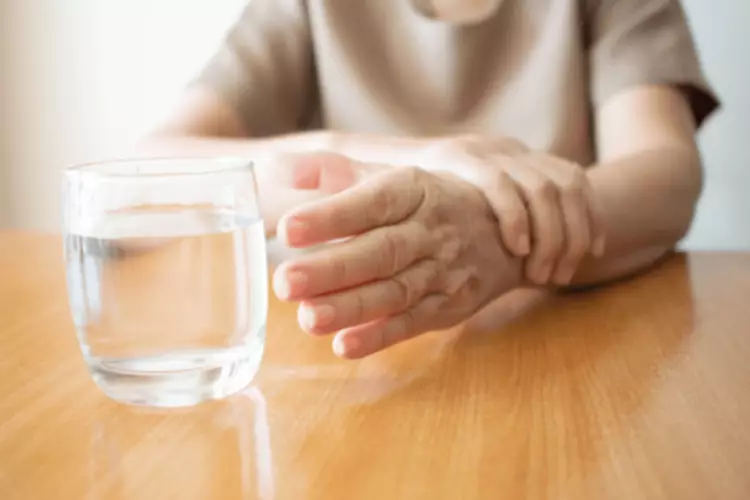
Similar results were found for morphine (Diana et al., 1995a, 1999; Bonci and Williams, 1997), cannabinoids (Diana et al., 1998a,b; Spiga et al., 2010), and nicotine (Rasmussen and Czachura, 1995; Epping-Jordan et al., 1998; Harrison et al., 2001). Particularly, morphine withdrawal causes a deep decline of firing rate and bursting activity of VTA dopamine neurons (Diana et al., 1995a,b), which persists long after the behavioral signs of withdrawal have ceased (Diana et al., 1999). During acute withdrawal from chronic morphine administration, an upregulation of the cAMP-dependent cascade produces a long-lasting increased probability of GABA release in the VTA (Bonci and Williams, 1996, 1997). Moreover, an increased sensitivity to presynaptic inhibition by both group II metabotropic glutamate receptors (mGluRs) and GABAB receptors results in a reduced release of glutamate (Manzoni and Williams, 1999). Therefore, withdrawal from chronic morphine modifies both inhibitory and excitatory inputs to VTA dopamine cells. Interestingly, while VTA dopamine neurons appear to normalize within 2 weeks after acute withdrawal, acute morphine administration produced greater responses in rats with a history of morphine dependence than in controls (Diana et al., 1999).
- However, someone who’s dependent on a drug that they were prescribed, may not like being called an addict because of the negative connotations.
- SUD can occur separately from physical dependence, although in the case of opioid use, a patient is also typically physically dependent on the drug.
- Official websites use .govA .gov website belongs to an official government organization in the United States.
Does the substance in question matter?
This might include behavioral therapies, support groups, and sometimes medications to manage cravings or co-occurring mental health issues. It’s more like remodeling a house – you’re not just patching up a hole in the wall, you’re rebuilding the foundation and changing the entire layout. However, the distinction between dependence and addiction can significantly impact treatment approaches. Managing physical dependence often involves a medically supervised detoxification process, gradually reducing the substance to minimize withdrawal symptoms. It’s like slowly taking off a Band-Aid instead of ripping it off all at once.

Short-term Effects

Because meth produces high amounts of dopamine, using it frequently will reduce the amount of dopamine normally produced by the body. When the drug is no longer used, the user will experience withdrawal symptoms due to the lack of dopamine that their body is developing on its own. Among pharmacological treatments the main target is represented by the dopaminergic reward system, which results to be hypoactive in patients experiencing anhedonia. These include psychostimulants, dopamine agonists, and the norepinephrine/dopamine reuptake inhibitor bupropion. However, the pharmacological profile of bupropion is complex, and its effects on reward processing in animals and humans may rely on a variety of mechanisms, some of which are still not completely known.
Disorders
The influence of recent clinical and social-environmental factors on hedonic capability and related psychopathology were investigated in a study by Pozzi et al. (2008). This study was conducted on a sample of 70 patients manifesting dependence on alcohol, opiates, or multiple drugs, without severe comorbidity. The measurement scales for anhedonia SHAPS (Snaith et al., 1995), SANS (Andreasen, 1989), and BRMS (Bech and Rafaelsen, 1980; Bech, 2002) were administered together with the European adaptation of the Addiction Severity Index (EuropASI; Blanken et al., 1994; Koeter and Hartgers, 1997). The composite scores from the addiction vs dependence seven areas of the EuropASI were introduced as independent factors in a stepwise regression analysis having symptom scores of anhedonia as dependent variables.
Researchers also believe that there are a number of similarities as well as some differences between drug addiction and behavioral addiction diagnostic symptoms. The purpose of this study is to consider different approaches in this field. Psychologically, preexisting mental health conditions like anxiety or past traumas can make people more susceptible to addiction. The attempt to fill an emotional void or numb the pain can lead to a reliance on substances or behaviors. Today, the APA classifies substance use disorders as mild, moderate, or severe. It doesn’t use the terms abuse and dependence to categorize the severity of an addiction.
It’s important to note that physical addiction, often used interchangeably with dependence, is a complex phenomenon that deserves its own spotlight. Additionally, undiagnosed or untreated mental health issues, such as depression, can be a predictor of eventual reliance on substances for self-management of negative affective states. In contrast, with SUD, a patient’s actions are directed primarily by an overwhelming need to accommodate the brain’s reward center, and the part of the brain that guides self-control and decision making is directly impeded.

How to Recognize and Treat Meth Addiction
- Unlike addiction, dependence does not necessarily involve difficulty controlling behavior.
- While it is possible to have a physical dependence without being addicted, addiction is usually right around the corner.
- Our authors, editors, medical reviewers, website developers, and parent company do not assume any liability, obligation, or responsibility for any loss, damage, or adverse consequences alleged to have happened directly or indirectly as a result of the material presented on RehabAid.com.
- These clinics are usually staffed with a team of doctors and nurses who have experience with addiction and drug withdrawal.
- Several authors suggested that anhedonia is an important factor involved in relapse as well as in the transition from recreational use to excessive drug intake.
Some jurisdictions are moving towards treating addiction as a health issue rather than a criminal one, but progress is slow and uneven. It’s like trying to steer a massive ship – changes in direction take time and effort. Some might benefit from inpatient treatment, while others thrive with outpatient care.

Addiction vs Tolerance vs Dependence
Misunderstanding these terms can lead to inappropriate patient management. For example, individuals struggling to stop their medications due to withdrawal symptoms may be wrongly accused of addiction or misuse. Misdiagnosing physical dependence as addiction can result in unnecessary referrals to drug detox and rehab centers.
Find Meth Addiction Treatment in Asheville
- Therefore this work suggests that anhedonia is an important factor involved in the transition from recreational use to excessive drug intake.
- It’s characterized by compulsive drug-seeking behavior, loss of control over use, and continued use despite negative consequences.
- It can occur even with prescribed medications when used as directed and doesn’t necessarily signify a loss of control.
- It’s like having a team of cheerleaders rooting for you as you run a marathon – their encouragement can help you push through when you feel like giving up.
No one starts with the intention of becoming addicted, but repeated use over time can drastically diminish control, leading to compulsive use. Addiction is a chronic, relapsing disorder characterized by compulsive drug seeking, continued use despite harmful consequences, and long-lasting changes in the brain. These changes primarily occur in the brain’s reward system, particularly within areas like the nucleus accumbens and the prefrontal cortex. Ongoing meth use can lead to mild to severe withdrawal symptoms once you stop taking the drug. Your doctor can assess your overall health by performing a physical exam. They can also refer you to a treatment center and answer any questions you may have.
Meth Withdrawal Medications
A person can have an addiction without necessarily having a physical dependence. Similarly, a person can have a physical dependence on a drug without feeling compelled to use it. However, they may still experience withdrawal symptoms if they stop taking it. On the purpose to treat anhedonia, melancholic, and negative symptoms in anhedonic alcoholics, Martinotti et al. (2010) proposed the use of acetyl-l-carnitine (ALC). ALC is an endogenous compound representing a small amount of the physiological pool of carnitines (Juliet et al., 2003).
